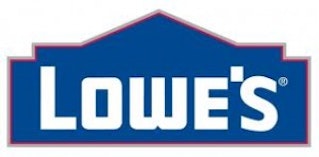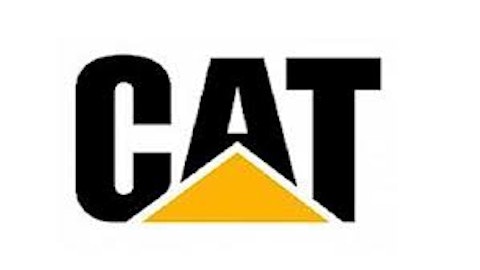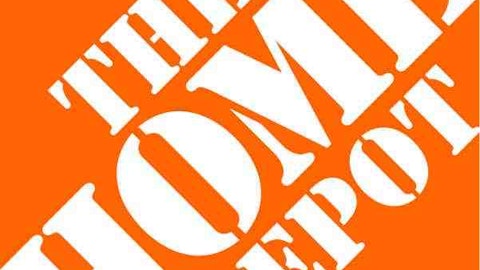Lowe’s Companies, Inc. (NYSE:LOW) operates 1,755 home improvement stores in the United States, Canada and Mexico, making it the second largest chain in its market behind The Home Depot, Inc. (NYSE:HD) with 2,257 stores. Lowe’s had sales in excess of $50 billion in 2012 and serves 15 million customers per week. Home Depot’s sales topped $74 billion in 2012.
Home improvement stores sales are of course sensitive to changes in consumers’ disposable income, but are also affected by swings in the housing market. With both the general economy and the housing market emerging from a bad slump, the picture is brightening for Lowe’s Companies, Inc. (NYSE:LOW) and the other companies serving this market.

What happened in 2012
Pretax earnings were 6.21% of sales, up from 5.79% of sales in 2011. This was achieved even though gross margin slipped a bit from 34.56% to 34.30%. In 2011, gross margin had been as high as 35.14%. In 2013, Lowe’s Companies, Inc. (NYSE:LOW) efforts at improving in-store efficiency paid off in the bottom line.
A stat that caught my eye was the average spent by each customer per transaction. This was $65.15 in 2012, up nicely from the $62.82 spent per ticket in 2011 and an even $62 in 2010. This is a clear indication that Lowe’s Companies, Inc. (NYSE:LOW) customers were emerging from their recessionary shell and spending more on home improvement items.
The nuts and bolts of Lowe’s strategy
One of the company’s key goals is to “unlock consumer demand that has been contained by real or perceived barriers to starting projects.”
The real barrier has been consumers’ reluctance to spend big bucks on home projects when their home equity was evaporating. The perceived barrier is that we are all afraid of messing up the projects we attempt. Lowe’s strategy to remove this barrier is to be the customer’s “partner” in all aspects of the project — inspiration, planning, completion and enjoyment. The latter phase puzzled me. I picture a masonry contractor sitting by my new built-in barbecue asking when the steaks will be ready.
Other strategic goals are what it terms “value improvement” through lowering unit costs and “product differentiation” through better displaying its merchandise — changing end cap themes and the rotation of products.
Technology is key to the company’s strategy as well. To have more frequent interaction with customers, Lowe’s created a MyLowe’s website that allows customers to have their own personalized project management page and even set up reminders about when routine home maintenance chores should be done. The company hopes that registered users of the site will spend more in total with Lowe’s and more on a per transaction basis.
On to the risks
From the 10-K:
“The continuing sluggish pace of the recovery from the deep global recession could continue to have an adverse affect on the rate of growth of discretionary spending by consumers and the share of such discretionary spending on home improvement products and services.”
I would say there is substantial pent-up demand for home improvement products, but how much of that demand will benefit companies like Lowe’s remains very much in doubt. Remember, unemployment is stuck at relatively high levels and there is substantial evidence that many Americans that do have jobs are underemployed, limiting their disposable income. It was recently reported that only 47% of adults have a full-time job.
“Adverse changes in economic factors specific to the home improvement industry may negatively impact the rate of growth of our total sales and comparable sales.”
The company cites negative factors such as the mortgage delinquency and foreclosure rates, and the substantial number of homes with negative equity. And since the 10-K was released we have that new troublesome trend on the horizon: rising mortgage rates. In my view, since mortgage rates are still at historically low levels, the uptick we’ve seen recently may not be that much of a factor on home sales. Turnover of homes is important because homeowners usually make improvements and upgrades just before putting the home on the market so it is more attractive to the buyer. And when the new owners move in, they usually want to make some changes and upgrades of their own.
The improvement in the housing market must be sustainable in order for Lowe’s to reach its revenue and profit objectives. The Home Depot, Inc. (NYSE:HD)’s 10-K contains much the same economic concerns. That company also strives to get customers to bond with them by providing interactive designing and planning tools accessed from the customer’s home computer.
A differentiating factor among these companies is who does the best job finding and training knowledgeable sales associates, and as Home Depot acknowledges in its own risk factors, one is being able to attract these employees and still control labor costs.
“We may not be able to achieve the objectives of the strategic initiatives we have underway if our organization is unable to make the transformational changes we are undertaking in our business model.”
To convert that long sentence out of corporate-speak: management is worried that it will be difficult to achieve the goal of being the customer’s partner throughout the process of completing a project. It requires sales associates with deep product knowledge, customers using the project planning tools Lowe’s has created, and — here’s the really difficult part — a small army of independent contractors including installers and repair techs performing their jobs with great competence. This new model could work in helping the company get a bigger share of the customer’s project expenditures. Or it could lead to customer frustration and dissatisfaction.
First quarter update
Lowe’s reported that comparable store sales decreased 0.7% in the first quarter compared to the same quarter of 2012, partially due to bad weather impacting sales of outdoor products. The company’s outlook for the full year is that comparable store sales will be up a healthy 3.5%. Competitor Home Depot reported a solid first quarter increase in comparable store sales of 4.3%. CEO Frank Blake cited the housing recovery as sparking a “stronger-than-expected start to the year.”
It’s very simple
Lowe’s definitely has all the tools, so to speak, to keep growing. For investors, the question is whether you believe interest rates will remain low and increase slowly, if at all. And we have to avoid the horror show “Housing Bubble: The Sequel” in order for home improvement stores to prosper.
Brian Hill has no position in any stocks mentioned. The Motley Fool recommends Home Depot and Lowe’s.
The article The Lowdown on the Risks Facing Lowe’s originally appeared on Fool.com and is written by Brian Hill.
Brian is a member of The Motley Fool Blog Network — entries represent the personal opinion of the blogger and are not formally edited.
Copyright © 1995 – 2013 The Motley Fool, LLC. All rights reserved. The Motley Fool has a disclosure policy.




